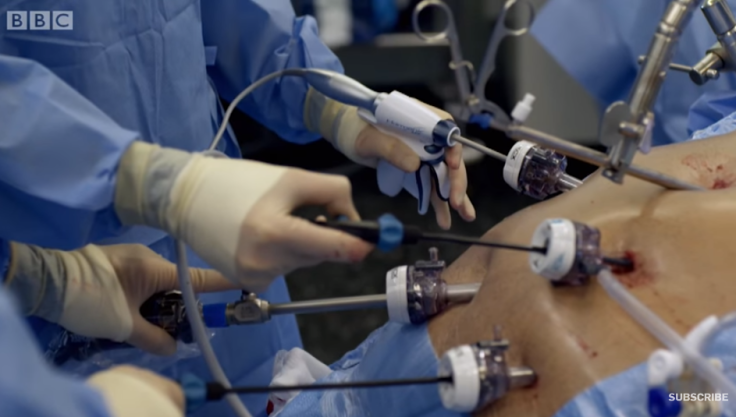Gastric Bypass Surgery Doesn't Just Shrink Your Stomach, It Changes How It Works

Gastric bypass surgery is a popular weight loss option designed to help obese individuals who have had trouble losing weight with other options. Some of us may think that it's the physical shrinking of the stomach that leads to weight loss in gastric bypass patients, but a recent Brit Lab video explained how this procedure is much more than simply stapling the stomach.
Most gastric bypass surgeries today are done via keyhole procedures which involve a tiny incision to minimize the amount of cutting.The first step makes your stomach smaller. Your surgeon uses staples to divide your stomach into a small upper section and a larger bottom section, Medline Plus reported. The stomach is reduced to about a 10th of its normal size. Although the bottom section will still receive blood flow and create stomach juices, it will never again see food. The second step is the bypass. Your surgeon connects a small part of your small intestine (the jejunum) to a small hole in your new small stomach.
Although the operation is effective in helping patients lose weight, it does come with a set of risks such as bleeding, infection, or allergic reaction to medicines.
According to Dr. Ahmed Ahmed in the Brit Lab video, the surgery not only changes the shape and size of the stomach but also how it functions, all of which play a role in extreme weight loss. Ahmed explained that during the operation, the part of the stomach which produces a hormone associated with hunger is separated so that it will never touch food again. As a result, the hormone production will be reduced and patients should feel less hungry.
Read More:
Gastric Bypass Procedures Not Created Equal, As Researchers Compare Surgery Results: Read More
Is Bariatric Surgery Finally Safe? Weight Loss Surgery For Obesity Could Lead To Long-Term Survival: Read Here



























